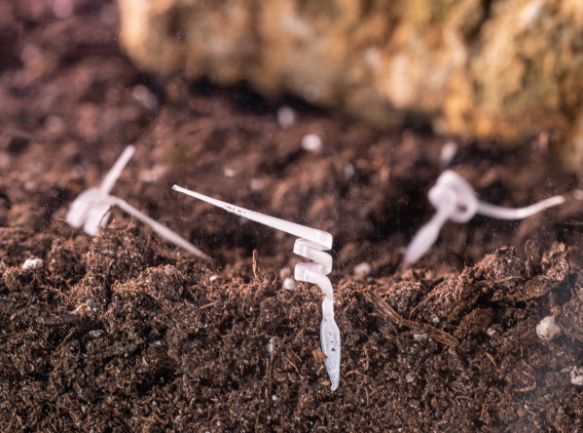The world of robotics may have taken a giant leap forward by planting a seedling with the creation of the first-ever 4D-printed seed robot - the I-Seed! Created by the brilliant minds at the Istituto Italiano di Tecnologia (IIT).
The I-Seed is a biodegradable robot that moves around autonomously based on humidity changes in its environment.

The prototype was created with inspiration from South African geranium seeds. It was created at IIT by Barbara Mazzolai's team as a part of the "I-Seed" European project.
Clever Little Seed
The I-Seed is an environmentally-friendly alternative to traditional robots that require batteries or external energy sources. This clever little seed can move about the soil, monitor soil quality, and even detect the presence of pollutants like mercury!
The I-Seed could have the potential to revolutionize everything from environmental monitoring to reforestation.
This robot was developed as part of the I-Seed project, a European project coordinated by the IIT, with the goal of creating robots that are inspired by plant seeds. These seed robots act as sensors for monitoring soil quality parameters and air metrics, including temperature, CO2 levels, and humidity.
The I-Seed is a 4D-printed robot, meaning it was created using 3D printing technology, but it can alter its shape and properties when exposed to environmental stimuli like light and temperature.
Inspired by the seed structure of a South African geranium, the I-Seed is designed to replicate the plant's hygromorphic properties, allowing it to adapt to changes in humidity and move autonomously.
"Our studies started from the observation of nature, with the aim to imitate the strategies of living beings or their structures and replicate them in robotic technologies with low environmental impact in terms of energy and pollution," Barbara Mazzolai, Associate Director for Robotics of the IIT and coordinator of the EU-funded project I-Seed, said in a statement.
Plant-inspired Research Projects
The I-Seed project is just the latest plant-inspired research project conducted by the IIT-BSR Lab. Led by Dr. Mazzolai, the lab has previously focused on studying the movement and growth strategies of roots and climbing plants.
Now, they are taking a closer look at the movement and dispersal features of seed-carrying structures.
When the environment is just right, seeds from Gerianaceae plants break away from the plant and use their hygroscopic properties to change shape and move independently.
The I-Seed was created to mimic this process using 3D printing and electrospinning techniques.
By combining materials that can absorb humidity and expand, such as cellulose nanocrystals and polyethylene oxide, with biodegradable and thermoplastic polymers based on Polycaprolactone, the I-Seed is able to explore and penetrate soil just like its natural inspiration.
The I-Seed is a remarkable achievement in the world of robotics and could have far-reaching implications for environmental monitoring and conservation efforts. After all, everything that flourishes starts with a seed!
The work was published in the journal Advanced Science.
Related Article: 'Chameleon Robots:' These Robots Can Change Colors and Mimic Their Surroundings Through 3D Printing










